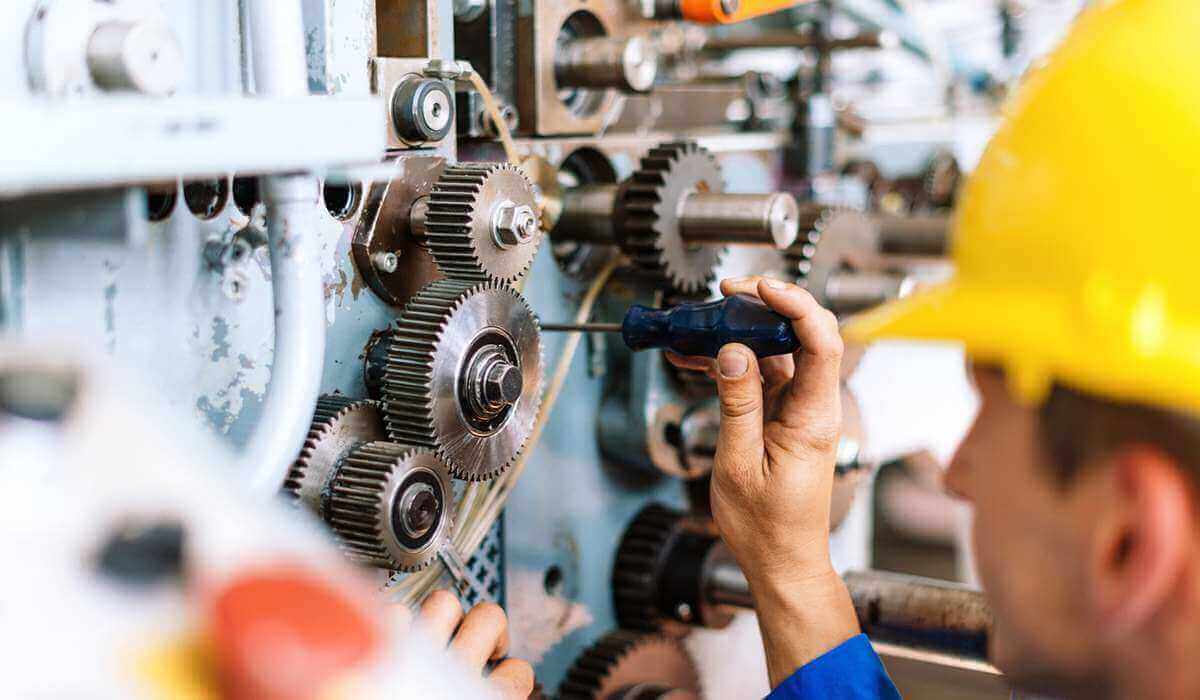In our ever-changing industrial landscape, predictive maintenance stands out as a symbol of innovation. But what exactly is it? Let's take a closer look at the complex world of predictive maintenance, to provide you with the knowledge you need to optimize your operations.
What is predictive maintenance?
Definition and fundamental principles
Predictive Maintenance, involves predicting when equipment failure might occur, thereby enabling timely maintenance. Unlike traditional methods based on corrective or preventive maintenance, predictive maintenance uses real-time data and analytics to predict equipment failures.
The principle is simple: machines share data before breaking down. These signs can vary – unusual vibrations, temperature fluctuations or even strange noises. Using advanced tools and technologies, such as the Internet of Things and artificial intelligence, one can detect these signals, making maintenance easy and efficient.
Difference between predictive maintenance, preventive maintenance and corrective maintenance
- Predictive Maintenance: As mentioned previously, predictive maintenance is based on real data collected in real time to anticipate potential breakdowns. Using advanced technologies like IoT and artificial intelligence, it identifies anomalies and performance gaps in order to intervene before failure occurs.
- Preventive maintenance : This form of maintenance is scheduled at regular intervals, whether there are signs of failure or not. It aims to prevent possible failures by regularly carrying out checks, adjustments and replacements. Its main difference with predictive maintenance is that it is based on programming and not on alarm signals.
- Corrective maintenance : Unlike the previous two types of maintenance, corrective maintenance occurs after a breakdown or failure has occurred. It consists of repairing or replacing components or equipment after their failure. Although it can be programmed following a detection during preventive maintenance, it generally occurs unexpectedly, following an unexpected breakdown.
To find out more about the different types of maintenance you can read this article.
Each type of maintenance has its advantages and disadvantages, and their effectiveness will largely depend on the specific needs of the business and the machines involved.
What are the advantages of predictive maintenance?
Significant reduction in operational costs
One of the major strengths of the use of predictive maintenance lies in its ability to optimize expenses linked to the management of industrial equipment.
One of its pillars is its ability to spot irregularities before they turn into major problems. This preventive detection generally results in less complex, and therefore less expensive, interventions. Instead of replacing an entire part, for example, a simple adjustment might be enough.
This also allows a reduction in systematic inspections which, very often, prove unnecessary and consume valuable time. With predictive maintenance, maintenance is focused only on equipment showing signs of wear or imminent failure. This precise targeting allows maintenance teams to concentrate their efforts, reducing unnecessary work hours and associated costs.
Nothing is more costly for a company than having to stop its production line due to an unplanned stoppage. Predictive maintenance, by offering constant monitoring, drastically reduces the risk of these sudden breakdowns. By guaranteeing smooth and continuous production, it avoids the financial losses associated with these unplanned shutdowns.
Increased machine longevity
Predictive maintenance is much more than just a tool for preventing breakdowns, it is also an effective way to strengthen the durability of industrial equipment.
By maintaining close monitoring of the condition of the equipment, predictive maintenance ensures operation in optimal conditions. This limits natural wear and prevents damage that can result from small, undetected malfunctions.
In addition, a machine whose maintenance is carried out in a preventive manner constantly remains in its best operational condition. Consequently, not only does it offer impeccable performance, but it also experiences less downtime, a factor often responsible for reducing the lifespan of equipment.
Finally, any time a machine is retained beyond its expected lifespan, it represents savings for the company in terms of investment in new equipment. In addition, this also helps limit the ecological footprint associated with the production and recycling of equipment.
Strengthening security and minimizing interruptions
In the industrial world, safety is more than a concern: it is a priority. And in this regard, predictive maintenance is a major ally.
By anticipating possible problems, predictive maintenance makes it possible to avoid many breakdowns likely to endanger employees. Well-maintained equipment reduces unforeseen events and, therefore, the associated risk of accidents.
When an anomaly is detected, it is immediately reported. This means teams can intervene proactively, before the problem escalates, ensuring a safe working environment and reducing unplanned downtime.
A worker who knows that the tools and machines he uses are constantly monitored and maintained in optimal condition is a more peaceful worker. This confidence in equipment and processes builds job satisfaction and promotes better productivity.
What are the technologies and tools for predictive maintenance?
The Integration of Sensors and IoT: At the Heart of Industry 4.0
The industrial landscape is undergoing a complete metamorphosis, driven by the alliance of advanced sensors and IoT. This combination is shaping the future of predictive maintenance and transforming the way we communicate with machines.
Modern sensors go beyond their simple measurement role. Enriched with advanced intelligence, they scan and analyze the work environment, detect minute variations and provide real-time feedback. Whether monitoring pressure or detecting the slightest acoustic variations, these new generation sensors are essential to ensure the optimal operation of equipment.
As for IoT, it represents much more than just a connected network. It gives life to an ecosystem where each device, each sensor, can exchange, share and decipher information. Far from being limited to simple notification, IoT makes it possible to trigger preventive actions, thus anticipating problems before they even manifest themselves. In short, IoT provides us with a true harmony of information, orchestrated to guarantee flawless performance and proactive maintenance.
AI and Machine Learning
In the digital age where data is flowing at unprecedented speed, Artificial Intelligence and machine learning are proving to be the guardians of rationality, transforming this information into actionable knowledge.
AI, through its machine learning algorithms, does not wait for a failure to occur. She sees the warning signs, the small deviations which, once analyzed and interpreted, can signal a future problem.
If AI is this powerful brain, machine learning is its adaptation mechanism. It is not rigid, it evolves. Every challenge, every new situation is an opportunity to learn. Thus, when faced with unknown anomalies, the system does not just report them, it integrates them as a new lesson. Tomorrow, he will be even more prepared, more refined.
In short, the alliance of AI and machine learning gives rise to machine learning systems that are not only reactive, but proactive, anticipating challenges before they even manifest.
Real-time monitoring systems
Real-time monitoring systems act like beacons in the night, illuminating gray areas and ensuring that our equipment is functioning properly.
These systems analyze every movement, every vibration, every potential anomaly. Their mission? Alert at the slightest atypical sign, offering a chance for intervention before the problem worsens.
However, their role does not stop at simple fault detection. They contribute to the constant improvement of the performance of production machines, by providing valuable data on their operation. In addition, by detecting anomalies upstream, they play a key role in accident prevention, thus ensuring better safety for operators.
How to implement predictive maintenance?
Essential steps for implementation
Predictive maintenance is emerging as the key to optimizing the longevity and efficiency of industrial equipment. Its application involves a strategic and well-planned approach. Let’s delve deeper into each step to better understand this process.
- Initial assessment: Before getting started, it is essential to have a precise map of the terrain. The analysis of equipment is not limited to simple observation: it is an in-depth study to identify their functioning, their state of health and possible signs of weakness. This initial diagnosis serves as the basis for the entire predictive maintenance strategy, ensuring that the efforts deployed truly meet the needs of the business.
- Sensor selection: At the heart of this approach, data collection is essential. For this, sensors are the eyes and ears of the system. They must not only be adapted to each type of machine and its environment, but also be able to provide reliable and precise information, whether it concerns the heat released, oscillatory movements or other essential variables. It is this meticulousness in the choice that will allow us to have accurate and relevant forecasts.
- Systems integration: With a multitude of data collected, their processing and analysis must be impeccable. This is where the importance of an integrated system comes into play. This centralized platform facilitates the synthesis of information, providing an overview of equipment health and enabling rapid, informed decision-making.
- Analysis and continuous improvement: The maintenance field is constantly changing. To ensure that predictive maintenance remains at peak efficiency, it is essential to engage in a process of continuous improvement. This involves regular review of methodologies, adaptation to new technologies and constant monitoring to seize optimization opportunities.
The challenges of predictive maintenance
The transition to predictive maintenance is no walk in the park. It faces many challenges, requiring patience, perseverance and careful planning
Modernization has a cost, especially when it includes new technologies and training. However, it is essential to consider this as an investment and not an expense. Long-term benefits, such as reduced breakdowns, increased efficiency and extended equipment life, far outweigh the initial costs.
In addition, setting up a predictive maintenance system is undoubtedly complex. She asks:
- Expertise: Have competent professionals to manage and implement the systems.
- Collaboration : Synergy between departments is crucial to ensure that all aspects of the implementation are considered.
- Flexibility: Be willing to adapt and adjust methodologies as needed and discovered during the onboarding process.
Although technology simplifies many aspects of maintenance, it is not foolproof. Excessive dependence can be problematic in the event of malfunctions. It is therefore imperative to:
- Have backup plans: Make sure you have emergency protocols in case of failures.
- Continuing education: Ensuring that staff are not only trained on the tools, but also what to do in the event of a breakdown.
- Diversification of skills: Ensuring that the team does not rely solely on technology but also retains traditional skills.



